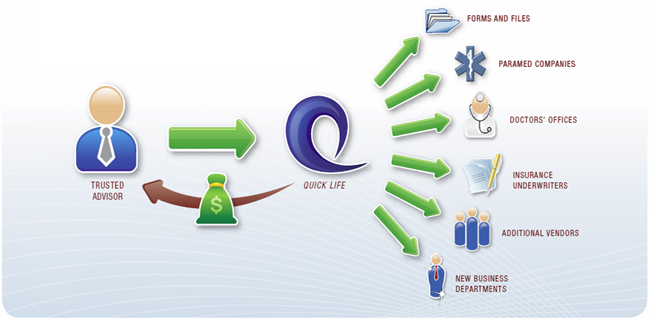ZERO DEPRECIATION ON CAR INSURNACE
I have seen many of my clients trying to save a few rupees when taking Car insurance.
They feel that since they have taken Comprehensive Car Insurance, everything is covered.
How wrong they are?
Comprehensive is a "misleading" word.
Yes. It does not cover DEPRECIATION!
ZERO DEPRECIATION CLAIM
The policy pays the full claim without any deduction for depreciation (excludes Tyres and Batteries) applicable on the own damage section. However, depreciation for parts excluded under India Motor Tariff is payable.
Key Benefits
| Minimum “Out of Pocket Expenses” | |
| No Concern about categorization of parts |
ZERO DEPRECIATION COVER gives your CAR with 100% coverage for all parts irrespective of material, whether rubber, plastic or metal. This plays an important role when you replace bumpers, broken headlamps, Airbags, and any other plastic parts, etc.
Please watch this video
http://youtu.be/TMLSEoJtayw
So, friends you are requested to take a ZERO DEPRECIATION CAR INSURANCE COVER whenever you are taking a Car Insurance policy.
Do contact your Insurance Advisor for more details.
And how much you are covered.
A princely Rs.10 Lakhs. So, your family will get between Rs.10 Lakhs to Rs.25 Lakhs as Insurance in case of your death.
Now, since you are 26 years, for the same Rs.10 Lakhs, if you take a PURE TERM PLAN, your premium would be only Rs.3010 in LIC (in Kotak it is far far lesser at Rs.1971 only). Even if you take the Term Plan in LIC, you are covered for Rs.10 Lakhs and saving Rs.33000 per annum.
If the saved amount of Rs.33000 is invested in PPF/Long Term Bank FD your corpus would be Rs.25 Lakhs.
If you invest the same Rs.33000 in Mutual Funds through SIPs, even assuming a very very conservative return of only 12% , you would still have a huge kitty of Rs.46,81,000 and at a reasonable return of 15%, you would have a corpus of Rs.75 Lakhs.
And, also this investment would be liquid and you can use at anytime you want.
So, now, I think you are feeling Rs.25 Lakhs is meagre.
Insurance is an expense, not an investment. Do NOT use Insurance as an avenue for investment - you are in the wrong lane. Treat it that way. Life insurance is there to protect your family from financial hardship in case you your no more.
Insurance companies and its agents are doing well mainly because of the ignorance of the policy buyers and policy holders. No wonder so many foreign companies want to enter India. Avoid pension plans & endowment plans from insurance companies. An insurance policy will not create wealth.
LIC and its agents have brainwashed the Indian public for years that "you should get something back when you buy insurance".
Taking a basic Term Insurance is the BEST Insurance.
The day you understand IMPORTANCE OF TERM INSURANCE - you will be on the road to financial stability.
For pension - the trick is to create as big a corpus as possible before retirement. Once you have created a corpus, you can create pension anytime immediately by investing in immediate annuity.
It is a MYTH that only insurance companies can create pension.
It will be better if you start investing in diversified equity funds via SIP to create wealth. PPF can also play a small part initially and a greater part in the later years.
You can also Get free Life Insurance cover(No Mortality & Admin.
Charges) by investing in Mutual Funds of BIRLA,Reliance, BOI Axa & Kotak.
Birla Century Sip gives you a cover which will be equivalent to your market value of the units you have or 100 times your monthly sip whichever is less.
Under the Century SIP option, if the investor makes monthly SIP instalments, the insurance cover for the first year will be 10 times the SIP amount and in the second year it will go up to 50 times and 100 times from third year onwards, subject to a minimum SIP instalment of Rs 1000 and maximum cover of Rs 20 lakh per investor. Among the Birla Funds you can consider Birla Sunlife Frontline Equity Fund, Birla sunlife Dividend Yield Fund and Birla Sunlife Equity Fund.
You can read in details here......http://goodfundsadvisor.blogspot.in/2011/09/normal-0-false-false-false.html
BOI Axa also offers Insurance similar to terms Birla is offering.
Kotak Mutual Fund also offers Life Insurance Cover wherein in case of death of Parent, the fund will invest the Balance Sips in the name of the Child. Among Kotak Funds you can consider KOTAK K50 FUND.
Reliance Mutual Funds is also offering Free Life Insurance Cover through SIP Insure.
In Reliance SIP Insure, Reliance will pay the unpaid instalments of the future SIPs in the event of the death of the investor during the sip tenure.
Among Reliance Funds, you can consider RELIANCE GROWTH FUND AND RELIANCE EQUITY OPPORTUNITIES FUND.
In Birla, the Insurance Coverage will gradually Increase^^^^^^^^^
but in Reliance and Kotak, the Insurance Coverage will gradually decrease.
Ideally, one can take a sip in 1 Birla and 1 Reliance/Kotak, this way your Insurance Coverage will be more or less the same throughout.

















